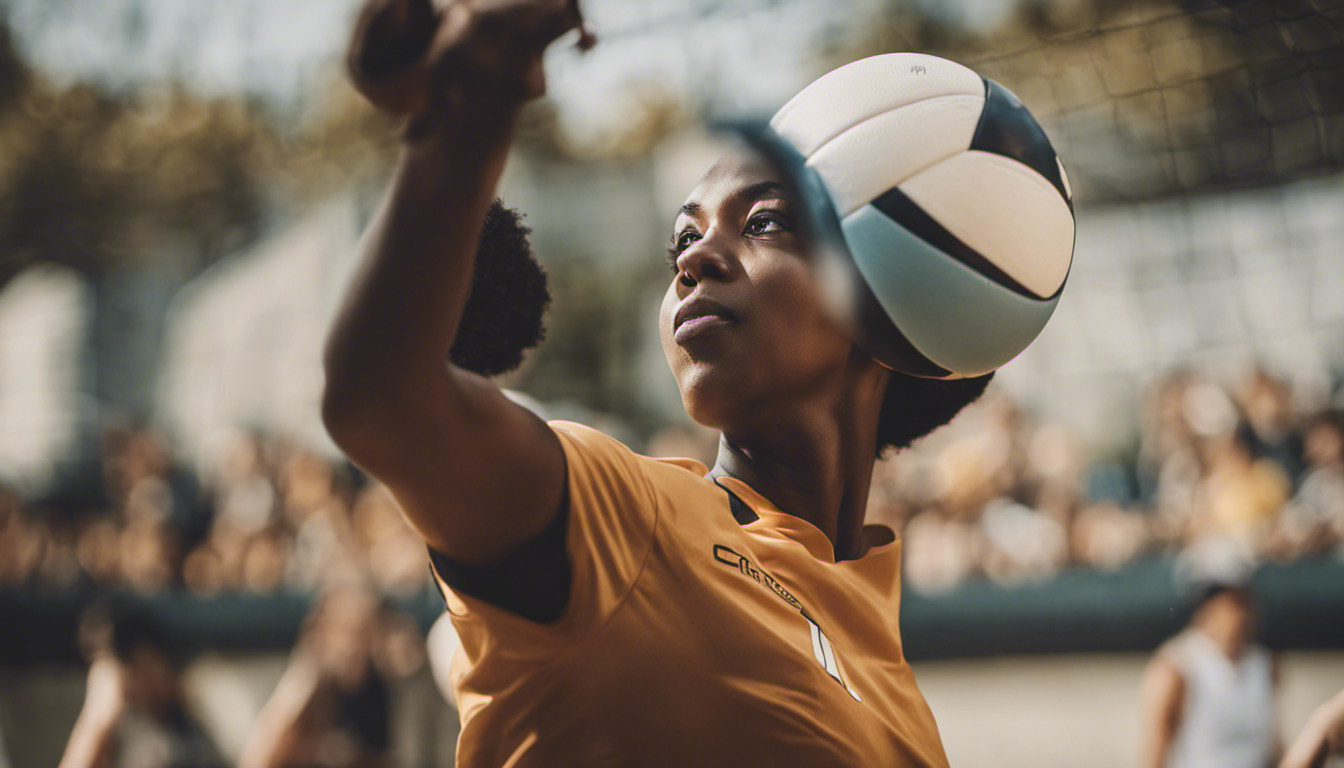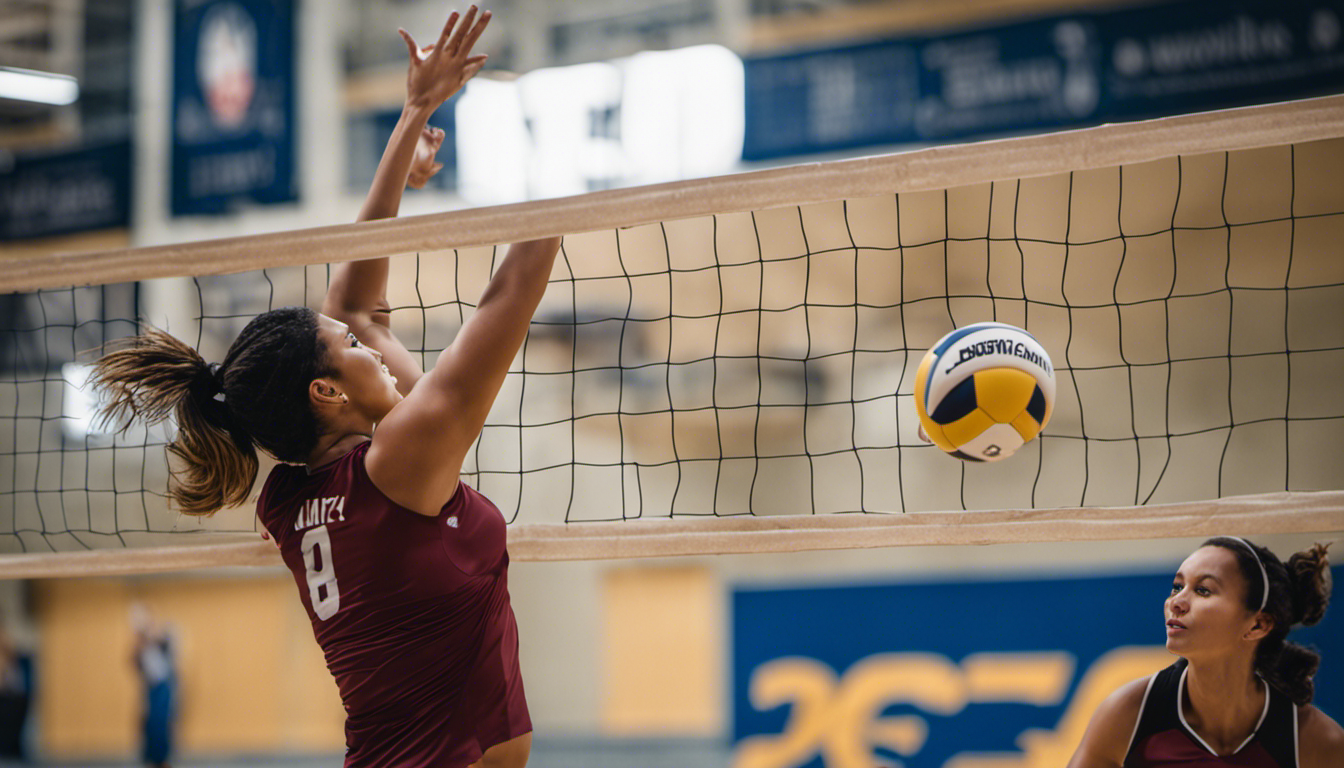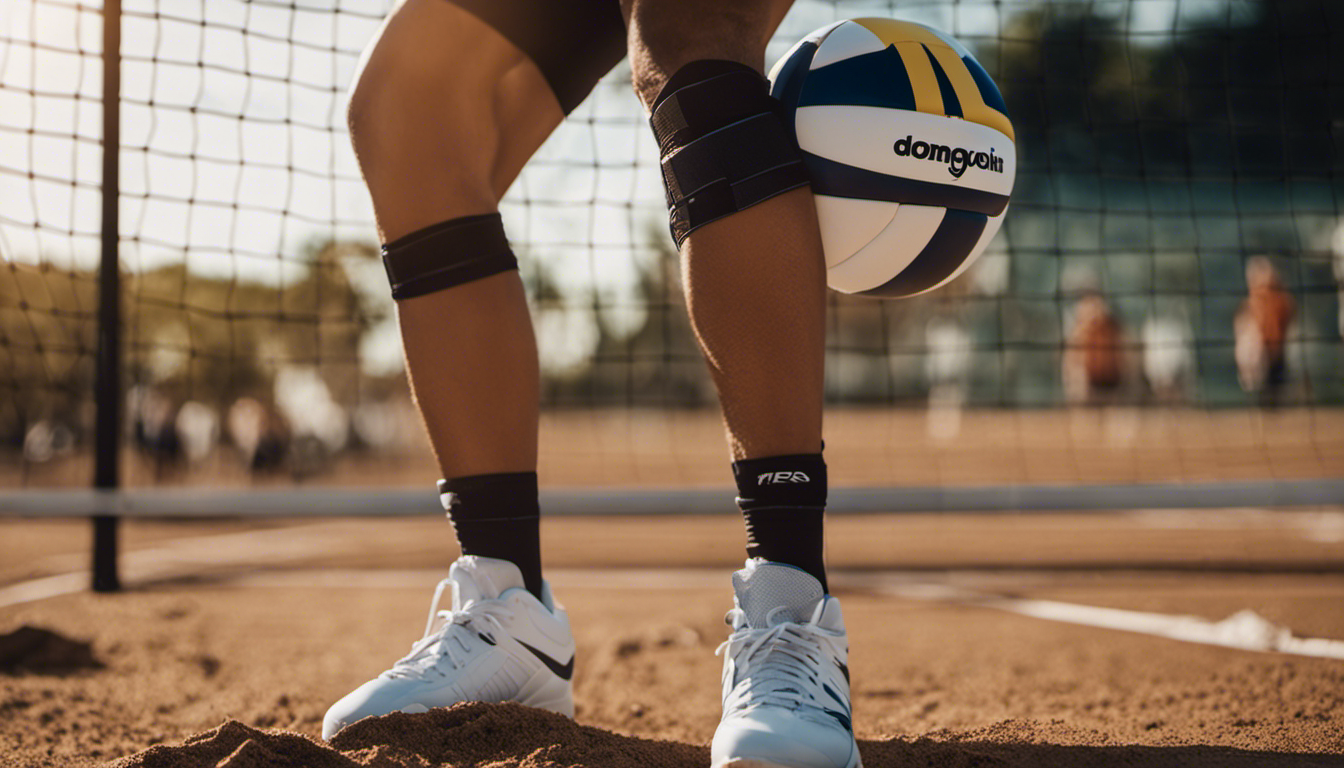Hey there! I’m here to demystify the world of volleyball techniques for you. In this article, ‘From Bump to Block: Volleyball Techniques Demystified,’ we’ll dive into the basics of bumping, perfecting the set, mastering the serve, digging deep with defensive techniques, and revealing blocking strategies.
We’ll also explore spiking with precision and discuss the importance of teamwork and communication in volleyball. So get ready to take your game to a whole new level!
Let’s jump right in.
Key Takeaways
- Bumping is a fundamental skill in volleyball, using forearms to pass the ball.
- Proper footwork and balance are crucial for serving effectively.
- Defensive techniques such as diving and footwork drills are essential for making low ball saves and improving reaction time.
- Individual skills like timing, reading opponent’s movements, and spiking with precision are important for successful plays.
The Basics of Bumping

Bumping is the most fundamental skill in volleyball, and it involves using your forearms to pass the ball. Mastering this technique is crucial for a successful game.
To improve your bumping skills, you can try incorporating some advanced techniques. One such technique is angling your platform. By slightly turning your body and angling your forearms towards the target, you can control the direction of the pass more effectively.
Another advanced technique is using a soft touch to absorb the ball’s impact. Instead of forcefully hitting the ball, focus on cushioning its contact with your forearms to create a smoother and more controlled pass.
However, it’s important to be aware of common bumping mistakes that can hinder your performance. One mistake is not getting low enough to properly position yourself under the ball. This can lead to an inaccurate or weak pass.
Another mistake is failing to maintain a firm platform by keeping your wrists locked together and creating a flat surface with your forearms. If there’s too much separation between your arms or if they’re angled upwards, it will result in an unstable pass.
Perfecting the Set

When it comes to perfecting the set in volleyball, there are three key points to focus on: hand positioning tips, timing and accuracy, and setting strategies and variations.
Hand positioning is crucial for providing a consistent and precise set, so it’s important to learn the proper technique.
Timing and accuracy are essential for delivering a well-timed set that allows your hitters to attack effectively.
Lastly, understanding different setting strategies and variations can give you an edge in outsmarting the opposing team’s defense.
Hand Positioning Tips
One key tip for better hand positioning in volleyball is to keep your wrists relaxed and loose. Proper hand placement is crucial for executing accurate and powerful shots.
When setting the ball, it is important to have your hands spread apart, forming a triangle shape with your thumbs and index fingers. This allows for better control and precision.
Additionally, maintaining good body positioning is essential. Stand with your feet shoulder-width apart, knees slightly bent, and weight evenly distributed on both feet. Keep your core engaged and maintain a balanced stance to ensure stability while setting or receiving the ball.
Timing and Accuracy
To improve your timing and accuracy in volleyball, focus on keeping your eyes on the ball at all times and anticipate its trajectory. By doing so, you can significantly enhance your reaction time and ability to target specific areas on the court.
When you keep your eyes locked onto the ball, you are able to closely monitor its movement from the moment it leaves your opponent’s hand or hits off the ground. This allows you to make split-second decisions about where and how to position yourself for a successful play.
Anticipating the trajectory of the ball also helps in targeting specific areas, such as aiming for an open spot on the opposing team’s side or strategically placing a spike where it is most difficult for them to defend.
Setting Strategies and Variations
Improve your setting skills by practicing different strategies and variations, which will add diversity to your game and keep your opponents guessing.
When it comes to advanced setting techniques, one effective strategy is the backset. This involves setting the ball behind you rather than in front, catching the defense off guard.
Another deceptive setting strategy is the dump set, where instead of setting the ball to a hitter, you quickly push it over the net yourself, surprising the opposing team.
Additionally, varying the tempo of your sets can also be an effective way to confuse blockers and create more scoring opportunities for your team.
Mastering the Serve

Get ready to dominate the game with your killer serve! Serving is a crucial skill in volleyball that can greatly impact the outcome of a match. Whether you’re a beginner or looking to improve your serving power, here are some essential techniques to help you ace your serves:
-
Proper footwork: Start with a balanced stance and step forward with your non-dominant foot as you swing your serving arm back.
-
Tossing the ball: Aim for consistency by tossing the ball in front of you and slightly above eye level.
-
Arm swing: Use a smooth motion, generating power from your legs and core as you strike the ball with an open hand.
-
Follow-through: Finish strong by extending your arm toward the target and snapping your wrist.
Digging Deep: Defensive Techniques

Digging deep and mastering defensive techniques is key to becoming a strong player on the volleyball court. When it comes to defense, two important aspects to focus on are dive techniques and footwork drills.
Diving is an essential skill for any defender as it allows you to reach for those low balls that would otherwise hit the ground. Practicing dive techniques such as the pancake or sprawl can greatly improve your ability to make those incredible saves.
Additionally, footwork drills are crucial in maintaining balance and agility while moving quickly on the court. Exercises like ladder drills or shuffle steps can enhance your reaction time and help you get into position faster.
Blocking Strategies Revealed

When it comes to effective blocking techniques in volleyball, there are a few key strategies that can greatly improve your game.
One of the most important aspects is reading your opponent’s movements and anticipating their next move. By studying their body language and paying attention to their positioning on the court, you can position yourself for a successful block and increase your chances of shutting down the opposing team’s attack.
Effective Blocking Techniques
Improve your blocking technique by keeping your arms extended and hands spread wide to increase the chances of stopping the opponent’s attack. Here are four key techniques to enhance your one-on-one blocking skills:
-
Proper footwork: Start with a balanced stance, ensuring that your feet are shoulder-width apart. Maintain a slight bend in your knees for agility and quick movements.
-
Timing is crucial: Anticipate the attacker’s jump and time your block accordingly. Jumping too early or too late can lead to ineffective blocks.
-
Watch the hitter’s approach: Observe their body language and footwork to anticipate their attacking angle. This will help you position yourself effectively for a successful block.
-
Stay disciplined: Avoid reaching across the net or swatting at the ball. Instead, focus on staying straight up and pressing over the net with good posture.
Reading Opponent’s Movements
Reading your opponent’s movements is essential in volleyball to anticipate their next move and react accordingly. Anticipating the opponent allows you to be one step ahead, enabling you to better position yourself defensively.
By closely observing the subtle cues of your opponent’s body language, such as their footwork, arm swing, or body positioning, you can gain valuable insights into their intentions. This can help you predict where they will send the ball or how they will approach an attack.
Once you have anticipated their move, it is crucial to adjust your defensive positioning accordingly. Whether it’s moving laterally to cover a potential cross-court shot or adjusting your blocking position based on the hitter’s approach angle, being in the right defensive position increases your chances of making successful plays and countering your opponent effectively.
Spiking With Precision

To spike with precision, you’ll need to focus on your approach and timing. Here are some hitting techniques and spiking strategies that can help you improve your accuracy on the volleyball court:
-
Footwork: Start by positioning yourself behind the setter, then take a quick first step towards the ball as it’s set.
-
Arm swing: As you approach the ball, bring your dominant arm back and swing it forward forcefully at the highest point of your jump.
-
Timing: Watch the setter’s hands closely to anticipate when and where the ball will be set. This will help you time your approach and jump correctly.
-
Target selection: Aim for areas on the court that are difficult for defenders to reach, such as corners or deep zones.
Teamwork and Communication in Volleyball

When playing volleyball, you can enhance your performance by prioritizing teamwork and effective communication with your teammates. Effective communication techniques are crucial in order to achieve coordination and cohesion on the court.
One important technique is clear and concise verbal communication, such as calling out plays or giving instructions during a rally. Nonverbal cues, like hand signals or eye contact, also play a significant role in conveying messages quickly and efficiently.
Building trust through teamwork is another key aspect of successful communication. Trust allows teammates to rely on each other’s abilities, making it easier to anticipate movements and make split-second decisions during gameplay.
Frequently Asked Questions
What Are Some Common Mistakes to Avoid While Bumping in Volleyball?
When bumping in volleyball, it’s important to avoid common mistakes like improper body positioning. By maintaining a low and balanced stance, you can improve your accuracy and control over the ball.
How Can I Improve My Serving Technique to Increase My Accuracy?
To improve my serving technique and increase accuracy, I focus on practicing serving drills that help me develop power and consistency. By honing my skills through repetition and proper form, I can serve with more confidence and precision.
What Are Some Advanced Defensive Techniques to Enhance My Digging Skills?
To enhance my digging skills, I can focus on advanced footwork and defensive positioning. By mastering quick movements and getting in the right position, I’ll be able to anticipate and react effectively to incoming spikes.
How Can I Effectively Communicate With My Teammates on the Volleyball Court?
To effectively communicate with my teammates on the volleyball court, I focus on clear and concise instructions, use hand signals for quick communication, and maintain a positive attitude to foster teamwork dynamics.
Are There Any Specific Strategies or Tactics for Blocking That Can Give Me an Edge in the Game?
There are several effective blocking strategies and techniques that can give me an edge in the game. By mastering footwork, timing, and hand positioning, I can effectively block my opponents’ attacks.
Conclusion
In conclusion, mastering the techniques of volleyball requires dedication, practice, and a deep understanding of the game.
From the basics of bumping to perfecting the set, each skill is essential for success on the court.
Additionally, defensive techniques such as digging and blocking strategies play a crucial role in preventing your opponents from scoring.
Finally, spiking with precision and effective teamwork and communication are key elements that can lead your team to victory.
By continually honing these skills and working together as a cohesive unit, you can demystify volleyball techniques and achieve greatness in the sport.


